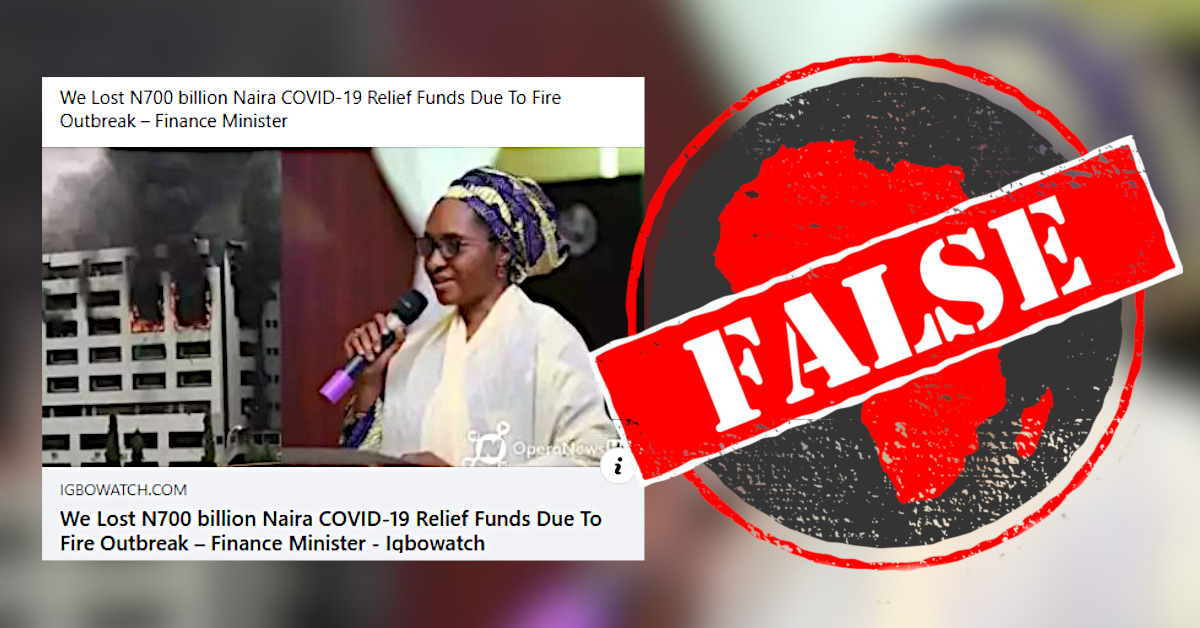A photo of a burning bus has been shared in a political Facebook group in Kenya, with the claim it was set on fire by local people unhappy about a political meeting.
“A bus ferrying people to Bukhungu Stadium for BBI report conference set on fire along Bungoma-Mumias-Kakamega County. Tension is high in the region as the residents demand respect from outsiders,” the post reads.
BBI is the Building Bridges Initiative, set up to act on recommendations in a report by the Presidential Task Force on Building Bridges to Unity in October 2019. The taskforce was appointed by president Uhuru Kenyatta in May 2018.
After the report was released, politicians held meetings across the country to publicise it. One meeting was held in Kakamega in western Kenya on 18 January 2020.
But was a bus carrying people to the meeting set on fire? We checked.

A Google reverse image search led to a story in the Hong Kong-based South China Morning Post newspaper, about a bus that caught fire when a burning gas canister rolled under it.
The article says a cook in China’s southwestern city of Chongqing threw the canister from a restaurant into the street.
Although the article is undated, its web page source code shows it was published on 6 November 2015.
Africa Check uploaded the photo of the bus on the Chinese search engine Baidu. Among the results was a slideshow of images of the bus on the Sina news website.
Sina, a Chinese media company, owns the Weibo social media platform and is a partner of the China News Service, whose watermark is on the photos.
The photo of the bus, shared in Kenya, is the second in the slideshow. A translation of the Chinese captions reveals the photos were published on 5 November 2015. Xiao Lefeng is credited as the photographer.
An online search for the terms “bus”, “fire”, “Chongqing”, “gas” and “canister” in the year 2015 led to numerous videos from November 2015 of the lit gas canister rolling under the bus and setting it on fire in Chongqing.
A video posted on the video-licensing site Newsflare on 4 November 2015 also shows the incident.
The same video was posted on YouTube five days later by CGTN, an international network owned by China’s state broadcaster. The description says it’s a clip from a surveillance video. A restaurant worker had “ignited the gas cylinder by accident when preparing food. She managed to pull the burning cylinder out to the pavement, but didn't expect things to go even worse.”
News reports from China and elsewhere make it clear that the incident took place in 2015 in China, and not in Kakamega, Kenya, in 2020. – Vincent Ng’ethe
“A bus ferrying people to Bukhungu Stadium for BBI report conference set on fire along Bungoma-Mumias-Kakamega County. Tension is high in the region as the residents demand respect from outsiders,” the post reads.
BBI is the Building Bridges Initiative, set up to act on recommendations in a report by the Presidential Task Force on Building Bridges to Unity in October 2019. The taskforce was appointed by president Uhuru Kenyatta in May 2018.
After the report was released, politicians held meetings across the country to publicise it. One meeting was held in Kakamega in western Kenya on 18 January 2020.
But was a bus carrying people to the meeting set on fire? We checked.

Gas canister caused bus fire in China
A Google reverse image search led to a story in the Hong Kong-based South China Morning Post newspaper, about a bus that caught fire when a burning gas canister rolled under it.
The article says a cook in China’s southwestern city of Chongqing threw the canister from a restaurant into the street.
Although the article is undated, its web page source code shows it was published on 6 November 2015.
Africa Check uploaded the photo of the bus on the Chinese search engine Baidu. Among the results was a slideshow of images of the bus on the Sina news website.
Sina, a Chinese media company, owns the Weibo social media platform and is a partner of the China News Service, whose watermark is on the photos.
The photo of the bus, shared in Kenya, is the second in the slideshow. A translation of the Chinese captions reveals the photos were published on 5 November 2015. Xiao Lefeng is credited as the photographer.
Surveillance video shows fire
An online search for the terms “bus”, “fire”, “Chongqing”, “gas” and “canister” in the year 2015 led to numerous videos from November 2015 of the lit gas canister rolling under the bus and setting it on fire in Chongqing.
A video posted on the video-licensing site Newsflare on 4 November 2015 also shows the incident.
The same video was posted on YouTube five days later by CGTN, an international network owned by China’s state broadcaster. The description says it’s a clip from a surveillance video. A restaurant worker had “ignited the gas cylinder by accident when preparing food. She managed to pull the burning cylinder out to the pavement, but didn't expect things to go even worse.”
News reports from China and elsewhere make it clear that the incident took place in 2015 in China, and not in Kakamega, Kenya, in 2020. – Vincent Ng’ethe
Republish our content for free
For publishers: what to do if your post is rated false
A fact-checker has rated your Facebook or Instagram post as “false”, “altered”, “partly false” or “missing context”. This could have serious consequences. What do you do?
Click on our guide for the steps you should follow.
Publishers guideAfrica Check teams up with Facebook
Africa Check is a partner in Meta's third-party fact-checking programme to help stop the spread of false information on social media.
The content we rate as “false” will be downgraded on Facebook and Instagram. This means fewer people will see it.
You can also help identify false information on Facebook. This guide explains how.


Add new comment